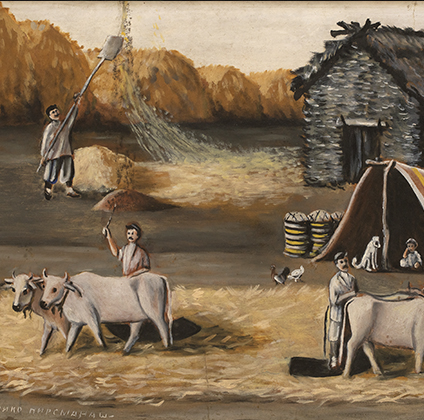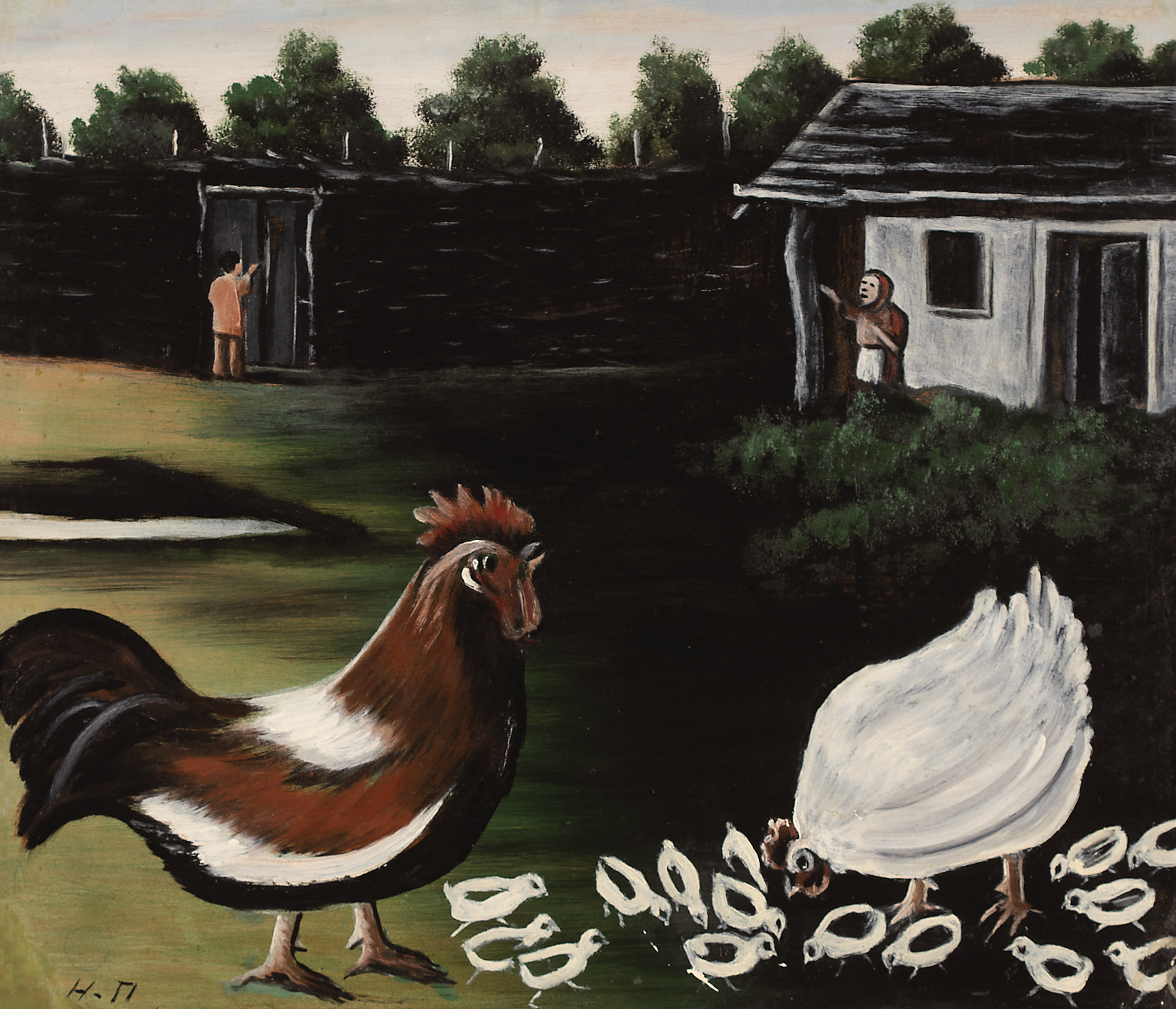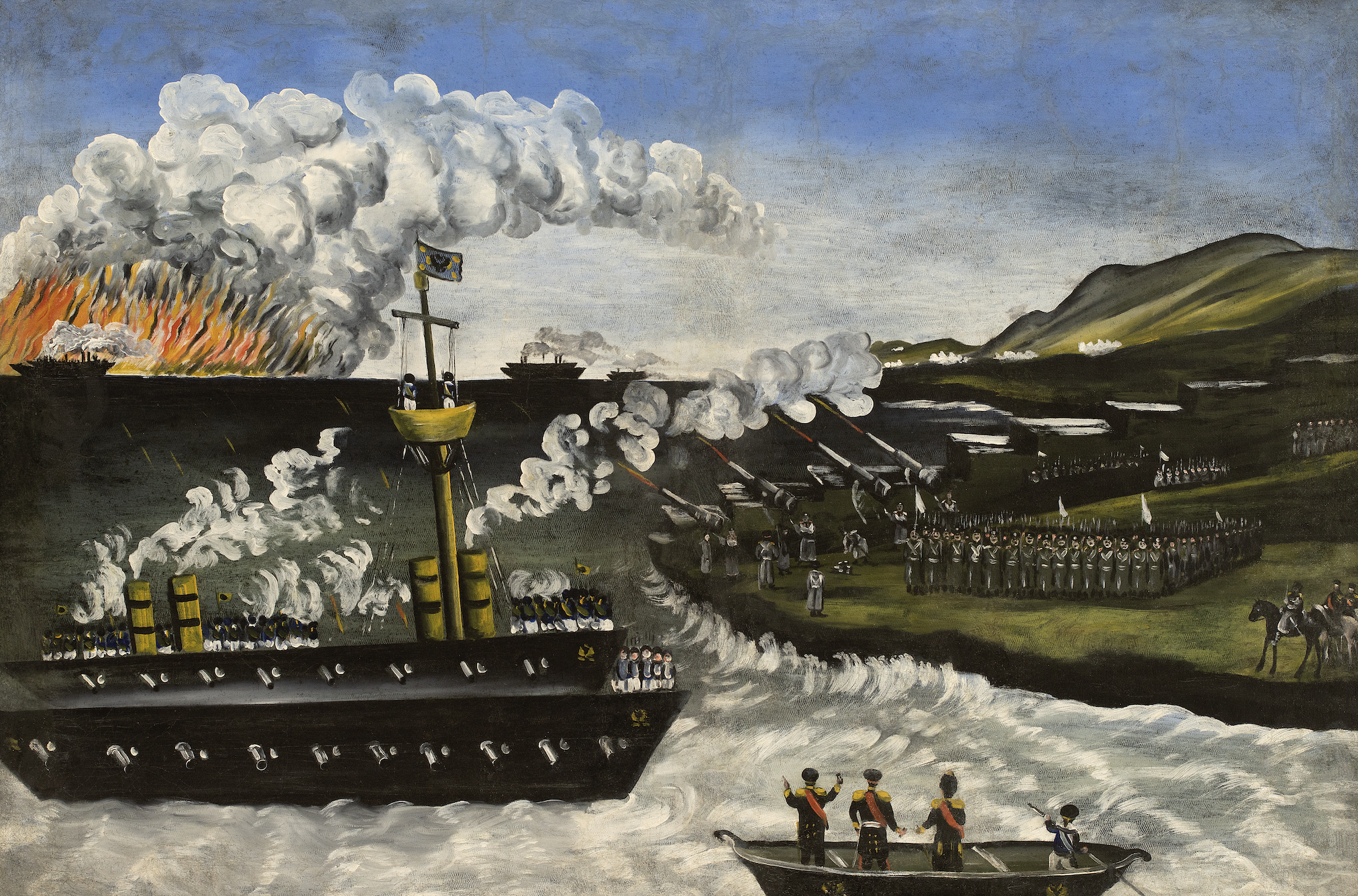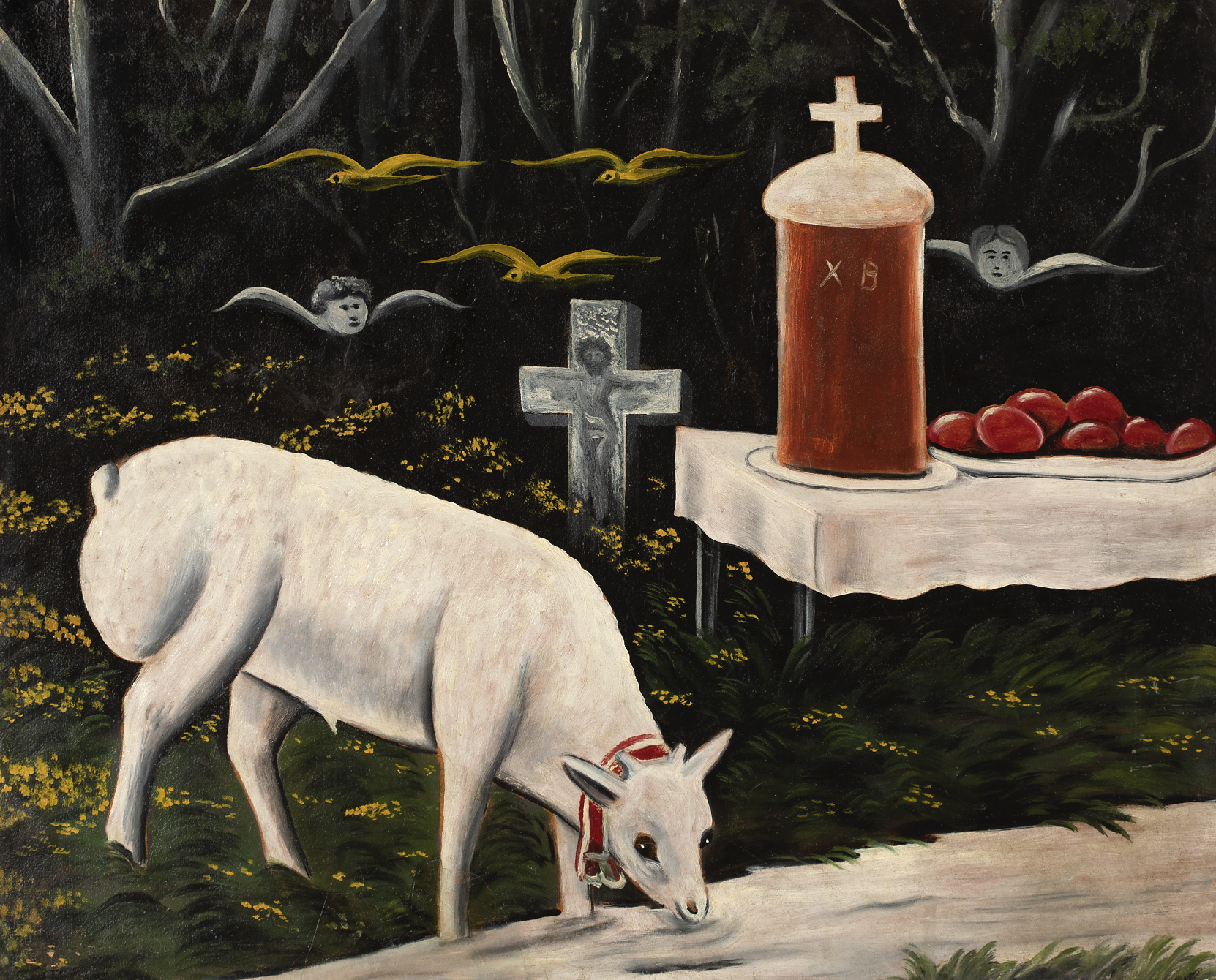
Feel free to add tags, names, dates or anything you are looking for


Devastated by the aftermath of World War I, the future renowned Georgian artist Lado Gudiashvili seeks out Niko Pirosmani in order to help him procure financial support from Tbilisi’s Union of Artists.
He finds Niko, but it is of little use.
The winter of 1918 is drawing to a close. The Red Army is in control of Russia, and Georgia has not yet proclaimed its independence.

Niko Pirosmani (1862-1918)
Gudiashvili finds Pirosmani under the steps of a building on a street near the railway station, which today bears his name. Prosmani looks weak; he offers Gudiashvili water from a kettle; he has no tea, coffee, or wine. He complains that the children in the yard constantly throw stones at the door to his den.

Niko Pirosmani (1862-1918)
Gudiashvili manages once more to raise some money for Niko, but he can no longer find the painter under the steps. Pirosmani has already passed away.
Gudiashvili leaves for Paris.
In his early fifties, sick and homeless, Niko died and was buried in such a way that no one could subsequently find any trace of him.
In the last years of his life, Pirosmani drank a lot of alcohol, without which he could neither think nor work. He was an extremely hardworking and honest man. Owing to his health and lifestyle, it would have been fitting that he should only work when necessary, but this was not the case. He painted non-stop. In the last month of the summer of 1914, World War I broke out, and this turned out to be the beginning of his demise - he could no longer earn his daily bread.

Niko Pirosmani (1862-1918)
A dry law was introduced. Tavern owners in Tbilisi began closing their establishments, and soon there was nobody left who would hire Pirosmani to paint or renovate the walls of their interiors. Throughout the entire year, Niko only painted a single sign for a brewery, and inscribed a couple of words on a street lantern. That was all.
Somehow, he received his final order. It was for a hotel in Malakani Square. He drank and worked, all the time looking weaker and sicker. Every evening, he returned to his den under the steps. Once, when he did not appear for two days, his neighbor, the one-legged bad shoe-maker Maisuradze, who was himself in dire straits, called on Niko and found him lying on the floor. He barely regained consciousness and told his neighbor, “I've been lying like this for three days. I'm dying.”

Niko Pirosmani (1862-1918)
Maisuradze summoned a doctor. Niko was apparently taken to Mikhail's Hospital, which was nearby. According to others, he was taken to Aramiants Hospital. After that, he was not seen alive again. An unknown patient named Nikoloz died on the same day. His body was dissected, and in full compliance with the laws of war, epidemics and destitution, the corpse was taken to Sts. Peter and Paul cemetery, where there were places for deceased homeless persons.
So happened that at that time, snub-nosed Misha was working as a salesman in the Pepoviantsi paint shop, and knew Niko well since he had been a regular customer.
When the cart entered the cemetery, Niko’s friends from Yarmuka were there burying a woman neighbor who had died alone. Vaso, the son of Pirosmani’s old friend Shasho the hatter, was among the mourners. Snub-nosed Misha told Vaso that the poor artist Niko was laid on a cart, and that he had taken his body from the hospital so as to give him a decent burial.
Vaso hurried to fetch a priest in order to lead a funeral service. He remembered exactly where Niko’s grave was, and brought the news to his friends in Yarmuka.

Niko Pirosmani (1862-1918)
Shasho the hatter and Niko's old friend Vano Abaev followed all of the old city traditions for the deceased: they laid a cloth over his burial place, filled glasses with wine, and then placed a stone on his grave.
It was the spring of 1918, Easter days.
With the passing of time, the stone placed by the Yarmuka friends disappeared, and Niko's grave disappeared along with it. It is a simple fact that if nothing is inscribed on the stone, a grave will disappear easily.

Niko Pirosmani (1862-1918)
They say that he was born in May and took his last breath in May – which is the finest month in Georgia.
People soon began to try and locate Pirosmani’s final resting place, searching not only within the vicinity of the Sts. Peter and Paul Church; the search continues to this day.